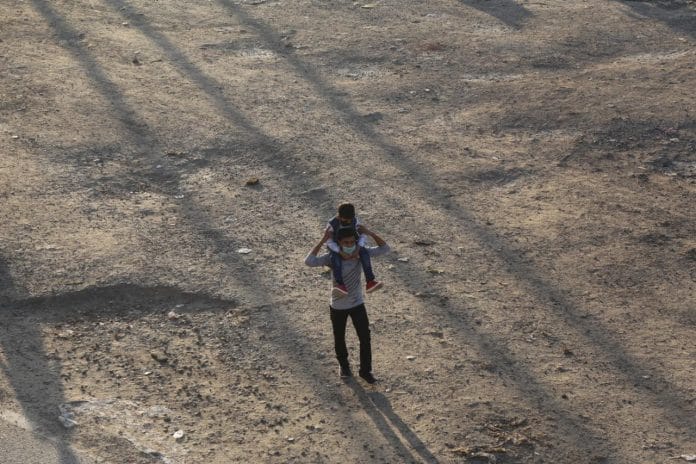Thank you dear subscribers, we are overwhelmed with your response.
Your Turn is a unique section from ThePrint featuring points of view from its subscribers. If you are a subscriber, have a point of view, please send it to us. If not, do subscribe here: https://theprint.in/subscribe/
International trade profoundly influences modern societies, driving economic growth and cultural exchange. However, it also raises ethical concerns, particularly regarding child labour. This complex relationship is shaped by economic pressures, regulatory frameworks, and societal vulnerabilities.
Trade’s Role in Combating Child Labour
International trade can positively impact child labour by promoting economic growth and reducing poverty. For instance, after Vietnam joined the WTO in 2007, improved market access raised rice prices, increasing household incomes. This enabled families to afford education for their children, reducing reliance on child labour (Edmonds and Pavcnik).
Engaging in international trade often pressures countries to adopt labour standards, including restrictions on child labour, due to consumer demands and trade agreements. For example, India ratified ILO Conventions in 2018 to set minimum age limits for employment (Convention No. 138) and prohibit the worst forms of child labour (Convention no. 182). In the 1990s, Bangladesh’s garment industry faced scrutiny over child labour, leading to the 1995 MOU supported by the government, ILO, and UNICEF. This initiative removed 10,000 child workers, offering education and training while establishing monitoring systems to address child labour.
Improved trade can boost economic activity, leading to better infrastructure and increased awareness about education. For instance, Ghana’s rise as a major cocoa exporter increased national and household incomes. With trade revenues, the government introduced the Capitation Grant Scheme in 2005, which eliminated fees for public primary schools, making education more accessible.
“The Dark Side of Trade: Fuelling Child Labour”
International trade can negatively impact child labour, as export-oriented industries may exploit child labour to cut costs and stay competitive. For example, in the Democratic Republic of Congo (DRC), the surge in global demand for cobalt—used in electronics and electric vehicle batteries—has led to thousands of children working in dangerous artisanal mines, facing hazardous conditions and exposure to toxic substances.
Shifts in labour demand can also increase child labour, as adults move to higher-paying export sector jobs, leaving children to fill gaps in informal work or farming. In Uzbekistan, the importance of cotton exports i.e. “white gold” has led to government policies requiring large-scale adult participation in seasonal harvesting. As adults left their regular jobs for the fields, children often took over household tasks or worked with their families in the cotton fields.
A “race to the bottom” can occur when countries relax labour laws to attract foreign investment, including those protecting children. For example, in South Asia (India, Bangladesh, Pakistan), the textiles and apparel industry has kept labour costs low to stay competitive in the global market. This often-involved weak enforcement of labour laws or loopholes that allowed child labour to persist.
In Côte d’Ivoire and Ghana, major cocoa exporters, the focus on maintaining competitive prices led to reliance on informal farming systems, where labour regulations were often unenforced, contributing to the persistence of child labour.
In Cambodia and Vietnam: Footwear and Garment Industries: These countries positioned themselves as low-cost manufacturing hubs for multinational corporations, especially in the footwear and garment sectors. Labor laws were either weakly enforced or selectively applied to allow flexible hiring practices, including the use of underage workers in informal sectors.
The Indian Experience
According to census data, in 1991, approximately 11.28 million children aged 5–14 years were engaged in work for economic gain, either paid or unpaid, including in family enterprises. By 2001, this number increased to 12.66 million, largely due to the continued prevalence of agriculture as the primary sector employing child labour. Additionally, urban areas saw a rise in child labour in domestic work and small-scale industries. However, in 2011, the number declined to 10.13 million, attributed to initiatives like the introduction of the Mid-Day Meal Scheme and the implementation of the Right to Education Act, which encouraged school attendance and reduced child labour.
Recommended steps ahead
There is need of certification of firm being child labour free e.g. the Rugmark Initiative (later renamed GoodWeave) aimed to certify carpets and textiles free of child labour.
Similarly, Fairtrade certification programs in cocoa and coffee industries in Africa incentivize farmers to avoid child labour by offering premium prices.
It is essential to ensure that the entire supply chain is free from child labour. For example, companies like Nestlé have committed to sourcing cocoa only from farms that do not use child labour, implementing traceability systems to monitor and verify their supply chains.
ESG (Environmental, Social, and Governance) analysis can encourage firms to take steps to reduce child labour by holding them accountable for ethical practices.
Governments can also offer cash benefits tied to the condition of no child labour, such as Brazil’s “Bolsa Família” initiative.
“Trade has the power to transform lives, but its success is hollow if it perpetuates the cycle of child labour.”
These pieces are being published as they have been received – they have not been edited/fact-checked by ThePrint


